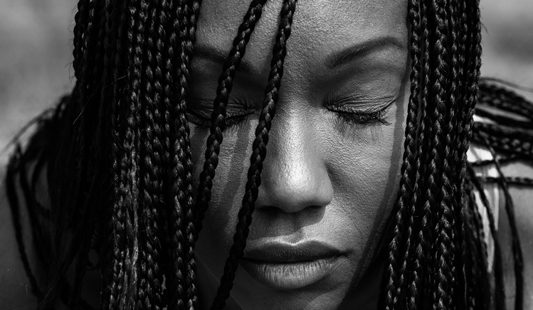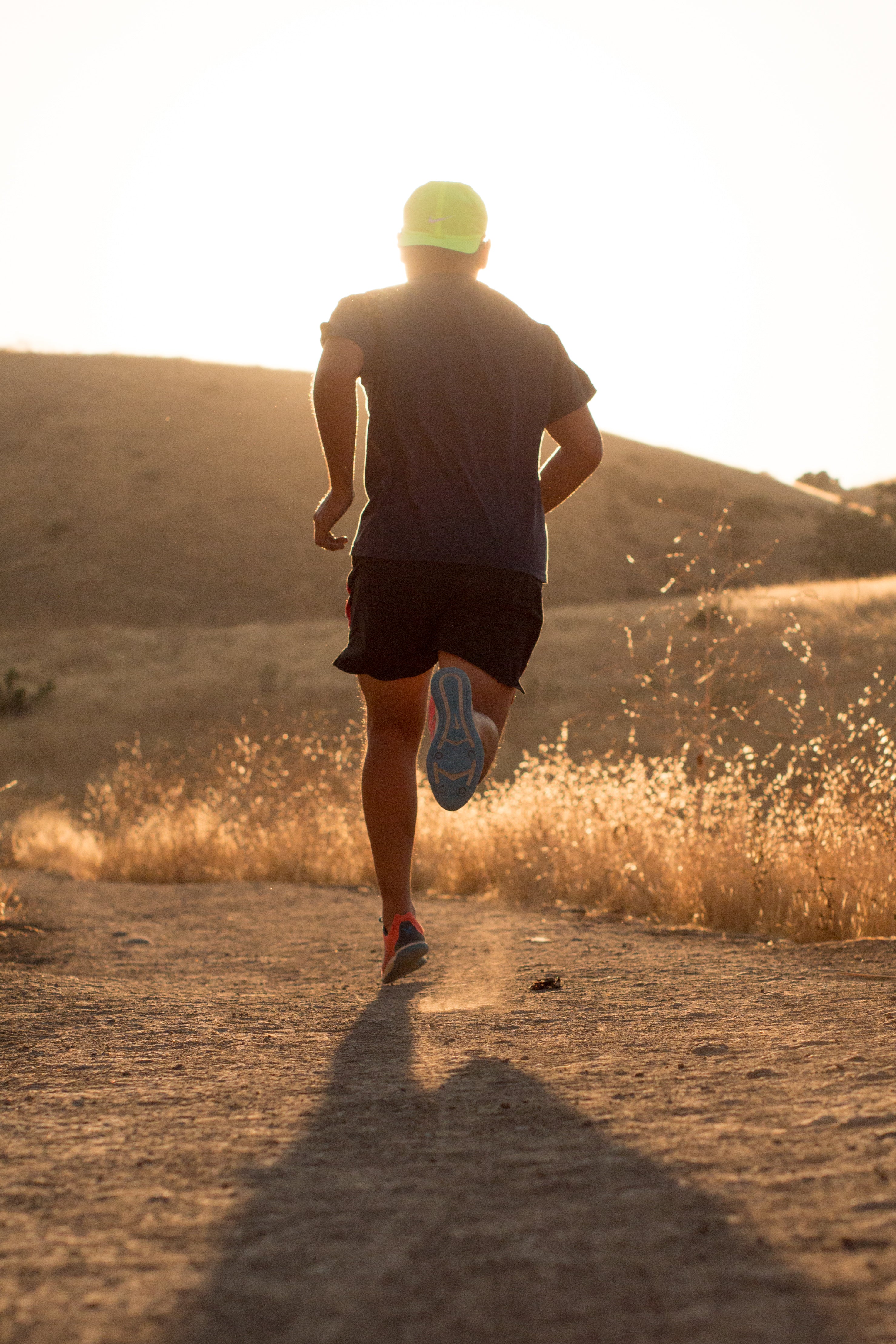"One thing that I have noticed since [being] in Missouri is that a lot of women will hear me speak and [comment on] how confident I am, that I speak confidently and walk into a room with so much confidence. I get [asked] how I got like that. I tell them it's from growing up and speaking out a lot. One thing that I want to tell women is, don't be afraid to speak up. Don't be afraid to be heard. You never know what your voice can do for someone else. If my confidence can help someone else be confident, then I want you to feed that. I want you to eat that. I want to give you that. A lot of women and young girls are just lacking the confidence in themselves. Social media plays such a big role in people being worried about what everyone has to say about them. My mindset is just, so what? Get up, say it. There will be someone else in the room who agrees with you. My only advice is, stop being afraid."
- Since 1985, Germany held the world record in the Women's 4x100 track and field event-- right up until the moment-- Women’s
- Since 1985, Germany held the world record in the Women's 4x100 track and field event-- right up until the moment
- Since 1985, Germany held the world record in the Women's 4x100 track and field event-- right up until the moment
- Since 1985, Germany held the world record in the Women's 4x100 track and field event-- right up until the moment
- Carmelita Jeter

Photo: Ben Draper
Since 1985, Germany held the world record in the Women's 4x100 track and field event-- right up until the moment Carmelita Jeter crossed the finish line with a time of 40.82 seconds in 2012. Running in lane 7 at the London Olympics for Team USA, along with Jeter, were Tiana Madison, Allyson Felix, and Bianca Knight. The video recording showcasing their dynamic prowess went on to become one of the sport's most viewed performances, and for good reason: Madison passed off to Felix with a strong lead as Felix forced pressure during her handoff to Knight. Knight held the lead to pass the baton off to Jeter who seemed to take off like a jet toward the finish line, leaving her competitors far behind. She pointed at the clock in her finish, a huge smile beamed across her face. She kept running but with an added bounce. The bounce of someone who not only held the world record since 2009 for her solo efforts but someone who had just finished setting a new one with the team of her dreams. This was the first time that I saw running get the visibility that it once had back in the —90s. A huge fan of Jackie Joyner Kersee and Flo Jo, my love for the sport dissipated along with the drama surrounding Marion Jones. I looked at the sport differently. It wasn't until 2012 that I took another leap of faith toward the sport. Two things changed my life that year: running, and that video of four brown women setting a new record while the world watched and reposted. Running came back to save me at a crucial time. It then took me around the world and eventually to a daytime brunch ceremony with none other than Carmelita sitting across from me. She was decked in all gold and carried the physique and presence of a warrior. Her confidence radiated through the room. It made me feel more confident.

Photo: Ben Draper
How has your transition been from athlete to coach?
The transition was a lot easier for me because I trained with John Smith, and we had so many phenomenal athletes in our camp. I watched him a lot and watched what he did with other athletes that competed in different events. When you're a true professional, you're already a student. If you're a student, then you're already semi-coaching as you're running. So the transition wasn't hard at all because I've been a student for so long. When I did start, it was second nature. If anything, the transition started with me not really wanting to be a coach. The transition wasn't as easy because I kept fighting it and finding new ways to do other things. But coaching kept coming back. That was the hardest part of the transition: letting it go and letting it happen.
Who are you coaching now?
Right now, I'm actually at Missouri State University. I was coaching two professional athletes, Destinee Brown and Aaliyah Brawn. But when I took this NCAA Division 1 coaching job, I needed to move from Los Angeles to Missouri, so I did not ask for them to come with me. This was a life-changing decision that I was making. I couldn't tell someone to come and live in the Midwest. I didn't want to jeopardize their championship year because I was chasing my own dream. So I allowed them to stay with John Smith. Aaliyah chose to go back to Atlanta to train with her father, and Destinee Brown chose to train with someone else. I didn't want them to come with me. It was a challenging learning process for me to be somewhere different, and the last thing I wanted was for them to repeat that process. I felt like that wasn't fair.
How long have you been in Missouri?
I've been in Missouri for almost seven weeks.
Wow. And your job there?
I am the Assistant Track and Field Sprints and Hurdles Coach.
How has that transition been? Moving there?
Very different from Los Angeles. I cried the first week because it's just different. When you're born and raised in a city and there a bunch of bright lights and fancy things, you come to the Midwest and you are humbled. You have to do things a little differently. The first week I just cried. I didn't want to be here. Then I got settled into my place and my athletes started training really well. The city embraced me and I was going everywhere and doing everything. Honestly, if it weren't for the people of Missouri and my athletes, I probably would not have stayed.
What keeps you going?
I have goals. My goal is for girls to run extremely fast and another is to be a head coach at a Big 5 Conference or Pac-12 school. I have my own goals and I have to start somewhere. When you acknowledge the fact that you have to start somewhere, you set your goals. The sky's the limit. Right now, I'm checking off my checklist and going from there.
How has social media affected how people have watched and celebrated the sport?
The sport is not being televised as it should. I feel like the sport is declining. I don't feel like it is excelling in the direction that it should be. Nowadays, in order for you to feel like you know an athlete, you have to go on social media because you're able to see their training. That's the good part about social media—it allows you to see someone's personality.

Photo: Ben Draper
Would you have rather had more social media when you were running?
No. It was different when I was running. In the beginning, there was really no social media and it didn't really come into play until 2012. I started professionally in 2007. The only thing social media really helps with is when you are promoting advertisements or sponsorships. When I was competing, we were on television a lot. People were able to watch us run everywhere. It was different. The sport was seen more. I don't even know if social media would have helped then because we were on television. Maybe because social media is so big, the sport feels as though it doesn't have to be on television as much. But we were on television so much during those years that social media really didn't play a role.Who were some of your idols growing up?
Some of my idols growing up were different because I grew up playing basketball. I was a fan of Michael Jordan, Magic Johnson, Charles Barkley, Grandmama, Sheryl Swoopes, and Dawn Staley. My goal was to be at the Olympics on the Dream Team and to play ball. It's so crazy that my dream didn't go away. I still went to the Olympics. I was still on a Dream Team. I still broke a world record and got gold, bronze, and silver medals. I still spoke that into existence. It just so happened to be in a different sport.
What are you most grateful for?
I'm most grateful for challenges and bumping my head a couple of times. People always ask me if I would do things over or take back certain things. I'm most grateful for my hardships. That's what built my character. My family is my biggest cheerleaders. I'm grateful that I didn't pass the SAT and ended up at a Division II school because I had an amazing coach, Warren Edmonson. I'm most grateful that I didn't make the team in 2008 because then I probably wouldn't have gone to train with John Smith. I probably wouldn't have run the second fastest time ever by a woman, and I probably wouldn't have made the 2012 Olympics. You know? So I'm grateful for so many downfalls because they made me the athlete and the person that I am. They all play a part in creating this amazing woman.What's one thing that drives you every day?
My love for the sport. My desire to help people and follow my purpose. Many times, people want you to take the route that they choose for you. I took the vision that I wanted to take. This is something that inspires me and brings me joy. I always tell people that if you aren't loving what you are doing, what are you doing it for? If you are not motivated every day to do something, then why are you doing it? You are wasting your time. It's like, what is your purpose?
What is your purpose?
My purpose is to lead someone to their greater self. I just want them to see all the greatness that is within themselves already. I'm not trying to make anyone Carmelita Jeter; I'm trying to make someone better than Carmelita Jeter.

Photo: Ben Draper
How important is rest and recovery for you?
Rest is very important. I'm with an all-girls program and I train my girls six weeks straight. Five weeks are hard and the sixth week is that recovery week. We train Monday, Tuesday, Thursday, and Friday, with Wednesday being our off day. The reason you get that sixth week of recovery is because I have been beating those legs up. Those legs are dead. They're tired and exhausted. I need to give you that week to mentally freshen your mind up, for your body to come back. That Wednesday is your day to go get worked on or just some rest. So having recovery is extremely important. Whether you are a distance runner or a sprinter or a ballplayer, at some point, the body has to have a downtime.
What are some of your practices for rest and recovery?
Ice baths. Ice baths, ice baths, and ice baths. Going to see the trainer, getting your body flushed out, and just relaxing. Sometimes people think that in order to be great you have to work out every day or you have to push your body to the limit. What happens when your body gets to its limit? It's going to break. Those are the things that I believe. My girls do three to four ice baths a week.
Wow. Whew. Whew.
I know. When you get used to it, it's nothing.
WRITER: Nai Vasha
Original piece featured in the eighth issue of Undo Magazine.

Photo: Ben Draper





